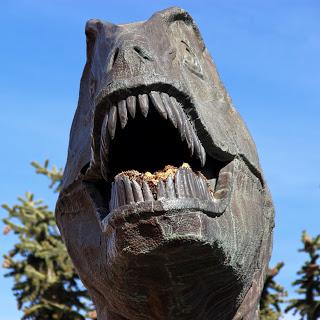 For almost a year I’ve followed a serviceberry tree 30 miles south of town, out in the Laramie Basin. What a surprise to find a serviceberry in a land of grass, sagebrush and greasewood flats! It was on the north side of a small ridge of tilted sandstone, in a tiny “forest” with aspen and cottonwoods, enjoying shade and tapping into water that accumulates in fractured bedrock. Yes, geology is destiny.
For almost a year I’ve followed a serviceberry tree 30 miles south of town, out in the Laramie Basin. What a surprise to find a serviceberry in a land of grass, sagebrush and greasewood flats! It was on the north side of a small ridge of tilted sandstone, in a tiny “forest” with aspen and cottonwoods, enjoying shade and tapping into water that accumulates in fractured bedrock. Yes, geology is destiny.But too often I found it inconvenient to visit the serviceberry; I guess it exceeded my distance limit for convenience. So yesterday I set out in search of next year's tree in town, on the University of Wyoming campus. There were plenty of candidates.My favorite was a palm. Yes, a palm tree in Laramie! It’s a plants-and-rocks kind of tree, specifically a plant in rock. But there’s no point in following this palm tree—it never changes. Or rather it hasn’t changed in the last 52 million years.
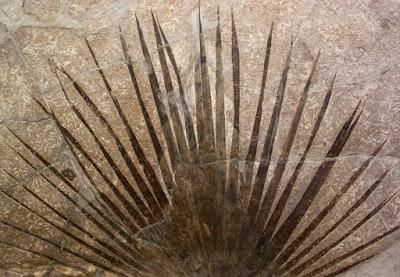
One of the many palm trees that grew on the shores of Fossil Lake 52 million years ago.
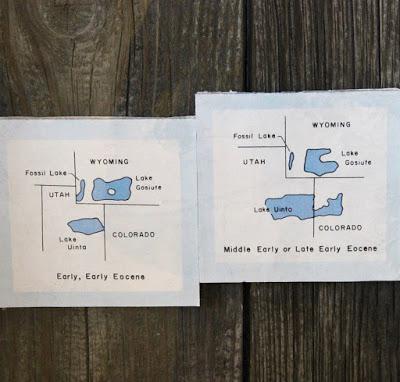
Fossil Lake was small compared to others, but the record it preserved is astounding!
The palm frond is in the Geology Museum. Actually it’s in the hallway, due to space constraints, along with other amazing fossils from the Green River Formation. The fish are most famous, but plants are well-preserved too, in beautiful detail.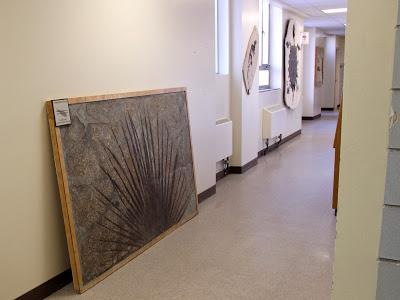

Above and below, beautifully preserved veins (click on images to view).
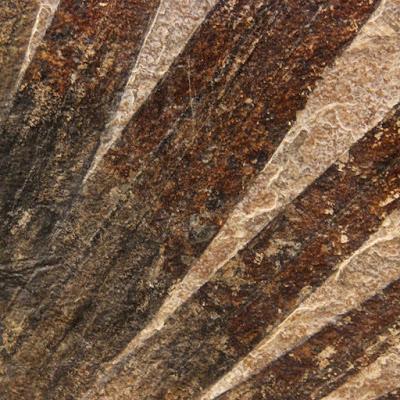
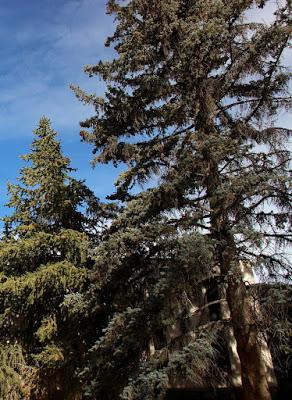
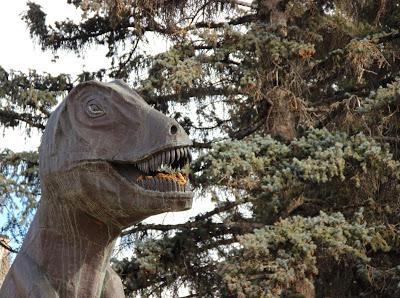
The amazing vegetarian T rex.
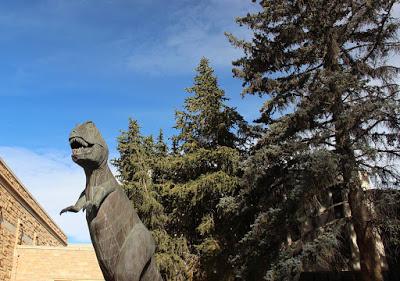
But amazing enough for a full year? Maybe not.
Next stop was the Williams Conservatory, where I entered a warm humid green world.
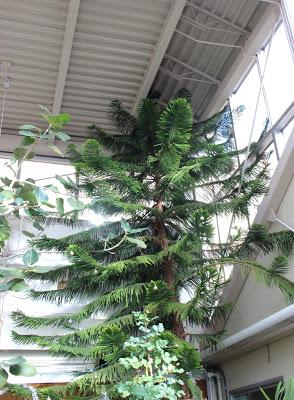
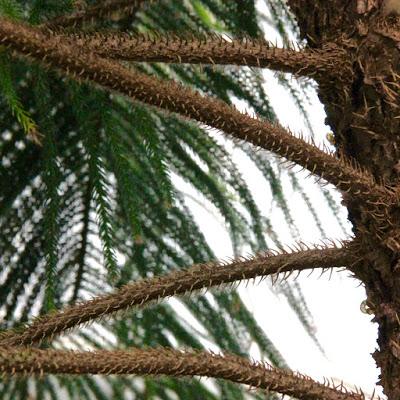

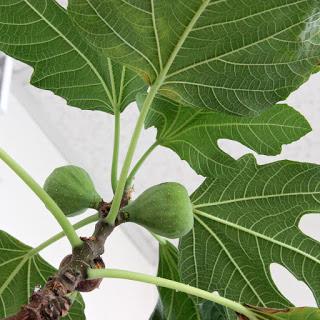

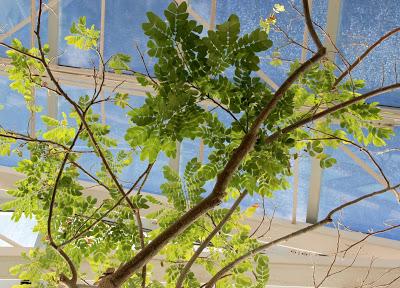
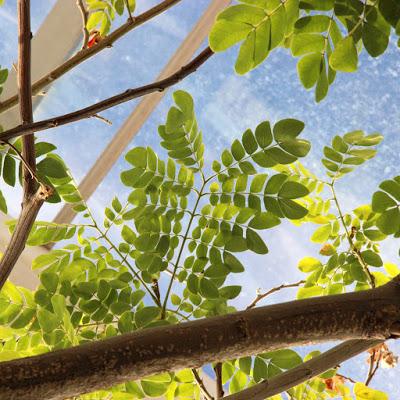
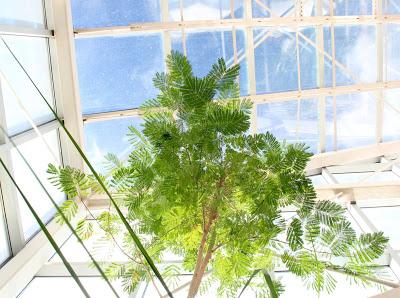
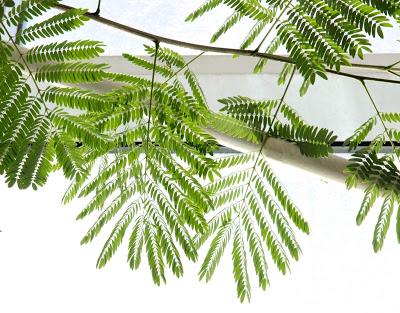
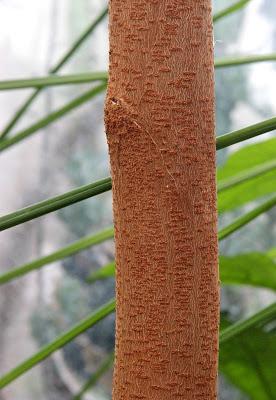
Lead tree’s simple but beautiful bark.
I explained my mission ("tree-following, an online thing") and waited for a reaction … “Cool!” So I asked which tree she would follow: “strawberry guava” (no hesitation). It blooms several times a year, and produces edible fruit which I would be welcome to harvest for photography and tasting. In fact, it was blooming yesterday …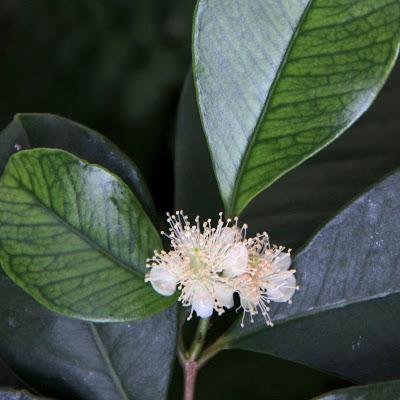
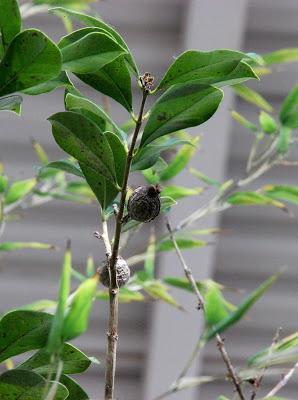
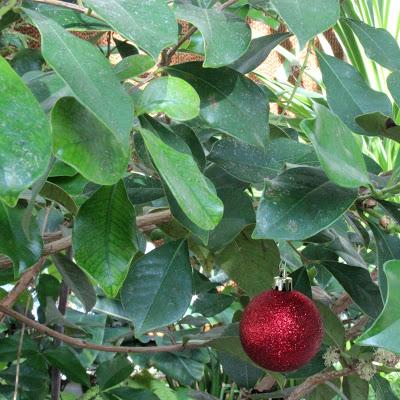
Holiday fun!
Strawberry guava (Psidium cattleyanum) is in the Myrtle family, and native to Brazil. It’s invasive elsewhere; in fact it's one of the 100 top invasive plant species. But the fruit are tasty and maybe I'll try strawberry guava leaf tea, also recommended.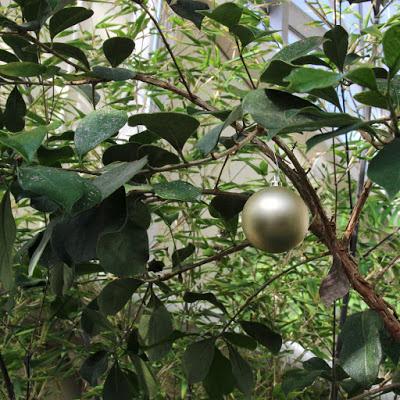
So will I follow a strawberry guava in 2017? I'm not sure. That lead tree, with its photogenic leaves, is hard to resist …


